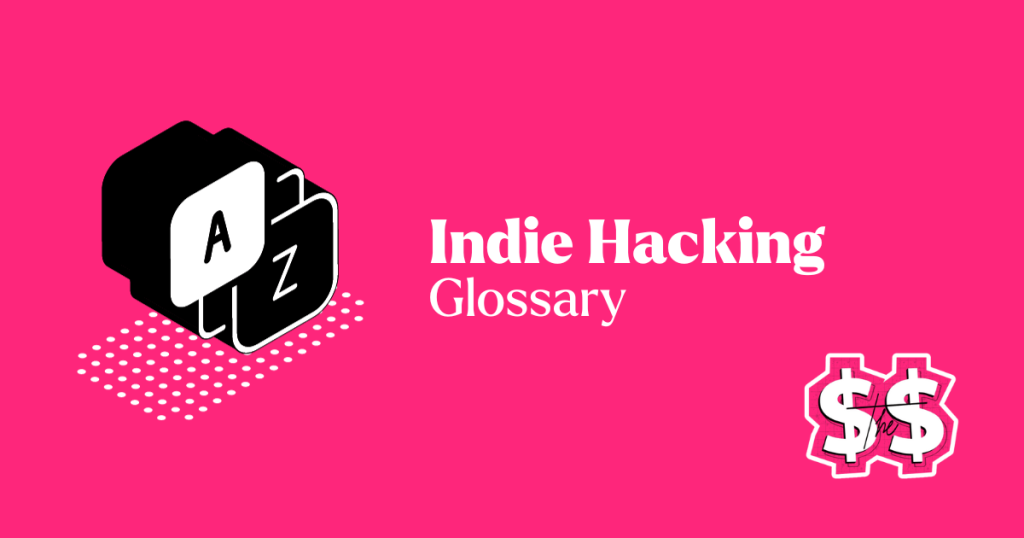Indie hacking is a business approach where an individual or a small team creates and manages a tech product or service without the help or backing of a larger company or outside investors. Indie hackers often work on side projects or develop products and services that solve a specific problem or fill a niche in the market.
General Indie Hacking Terms
- Indie Hacker: An individual entrepreneur who builds and grows a business independently, often with a focus on bootstrapping. (ref.: slow solopreneur glossary)
- Bootstrapping: Building and running a business with little to no external funding, relying on personal resources and revenue.
Business Development
- MVP (Minimum Viable Product): The smallest version of a product that allows for testing and validation with the least effort.
- Pivot: Making a significant change to a product or business model based on feedback or market shifts.
Revenue Models
- Subscription Model: Charging users a recurring fee for access to a product or service.
- Freemium: Offering basic services for free while charging for premium features or additional functionalities.
Marketing and Growth
- Content Marketing: Creating and distributing valuable content to attract and engage a target audience. (ref.: content marketing glossary)
- Growth Hacking: Using creative strategies to rapidly grow a user base or customer acquisition.
Community and Networking
- Indie Hackers Community: A network of like-minded entrepreneurs sharing insights, advice, and support.
- Product Hunt: A platform for discovering and launching new products, widely used by indie hackers.
Funding and Financing
- Bootstrap Fund: A fund that supports indie hackers and small businesses following a bootstrapping approach.
- Angel Investor: An individual who provides financial support to startups and indie projects.
Metrics and Analytics
- ARR (Annual Recurring Revenue): The total annual revenue generated from subscription-based products or services.
- Churn Rate: The percentage of customers or subscribers who discontinue a product within a given time.
Tools and Resources
- NoCode Tools: Platforms that enable building applications without extensive coding skills.
- SaaS (Software as a Service): Providing software applications on a subscription basis over the internet.
Success Stories
- Indie Hacker Success Story: A narrative of an indie hacker’s journey, often highlighting achievements, challenges, and lessons learned.
- Exit Strategy: A plan for selling or exiting a business, often through acquisition.
Challenges and Solutions
- Founder Burnout: Exhaustion or stress experienced by indie hackers due to the demands of running a business.
- Lean Startup: A methodology emphasizing building a startup with minimal resources and iterating based on customer feedback.
Stay Informed and Inspired
- Indie Hacker Podcasts: Audio programs featuring interviews, insights, and stories from successful indie hackers.

Indie hacking is the act of creating and growing a business or product with a minimal budget and resources, often with a focus on using technology and online platforms. The goal of indie hacking is to create a profitable and sustainable business or product without the need for outside funding or a large team. It involves a combination of creativity, resourcefulness, and hard work to build a successful venture. Many indie hackers share their experiences and strategies through online communities and blogs, creating a supportive network for fellow entrepreneurs.
